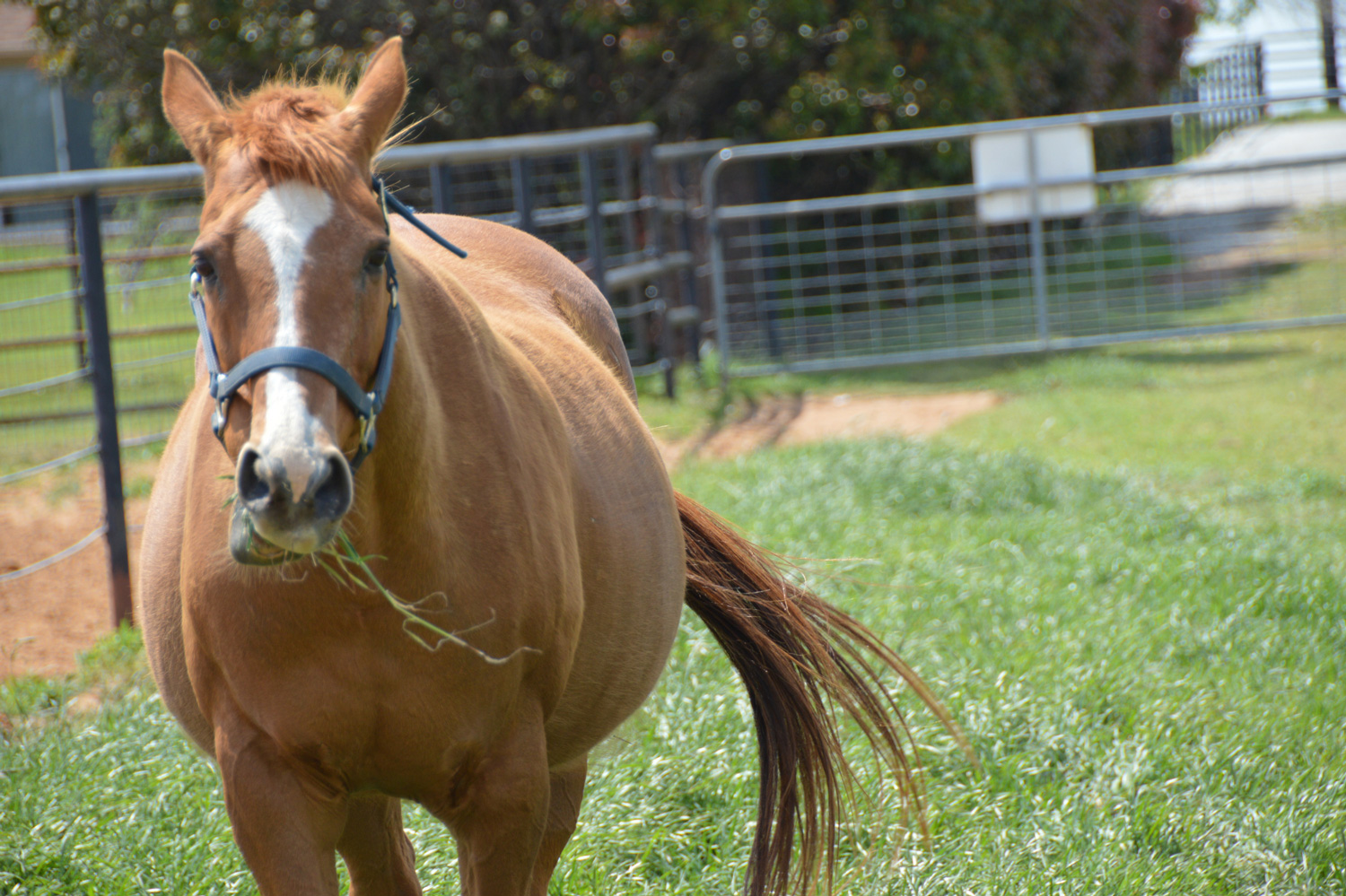If you have a teenage horse or older and you made it through this past winter without a laminitis episode, you should crack open a bottle of something old and expensive to celebrate.
There’s a reason we’ve begged Dr. Hoyt Cheramie to travel to the mountains during mud season to talk about Managing Metabolic Mayhem, and it’s because we’re emotionally scarred from the sheer volume of metabolic chaos we witnessed during the cold months this year, and we’d like to start the conversation about diagnosis and prevention ASAP to save you from this same level of emotional distress.
Let’s chat briefly about the metabolic issues you’ll want to stay on top of in order to keep your favorite four-legged money-burner from feeling like he’s walking on hot coals:
Cushing’s Disease, Medically Termed Pituitary Pars Intermedia Dysfunction (PPID):
Most horse owners are familiar with the shaggy-coated appearance of the classic Cushing’s horse, but by the time your horse looks like a wooly mammoth it’s likely he’s had Cushing’s for a long, long time. There’s an old saying, “If your horse has PPID, it’s not a matter of IF he’ll founder but WHEN.” We’d like to prevent that painful experience for you and your horse if possible.
Other signs that your horse might have PPID include delayed or abnormal shedding, loss of muscle along the topline, lethargy, abnormal sweating, fatty deposits along the withers, tailhead, or above the eyes, and increased drinking and urination. Basically if your middle-aged horse looks at you funny, we should test for PPID.
Let’s get a little science-y for a minute. PPID can be caused by a tumor in the pituitary gland, but is more commonly caused by age-related degeneration of the nerve cells that produce dopamine in the brain. Dopamine is a hormone that acts as a braking mechanism for the pituitary gland’s production of another hormone, ACTH. Excess ACTH wreaks all kinds of havoc on any animal’s body, including delaying wound healing, making an animal more prone to illness, and – unique to our horse besties – increasing the likelihood of laminitis (founder). So if your horse’s dopamine levels are decreasing, there’s nothing stopping ACTH from rising and
causing all sorts of problems.
It’s estimated that more than 20% of horses over the age of 15 have PPID – that’s one in five horses in their late teens or beyond. (PPID can occur in younger horses too.) Our goal is to catch as many of these horses as early as possible to initiate treatment before they become Saturday night “my horse can’t walk” emergencies.
There is no cure for PPID. There is only one FDA-approved treatment in horses and that’s Prascend® (pergolide). Prascend® acts as a dopamine agonist, which means it mimics dopamine’s effect in the brain to compensate for the age-related degeneration of the nerve cells that produce dopamine. (Sort of like watering the garden during a drought.) By mimicking dopamine’s effect, Prascend® acts to control the overproduction of ACTH, which decreases the likelihood of laminitis.
Testing for PPID can be a little tricky. It’s best to test from January – June, as there are normal, natural elevations in ACTH in late summer and autumn. There are a few different ways to test for PPID too, and one of our veterinarians would be happy to discuss which one we think is best
for your horse.
Equine Metabolic Syndrome (EMS):
EMS is PPID’s ugly cousin, and they often show up to the same party together. Approximately 30% of horses with PPID also have EMS, a situation that makes a horse even more prone to laminitis.
Any time you hear the word “syndrome” it means even the smartest scientists don’t know exactly what’s going on, but there are a few things we know for sure about EMS in horses:
1. The hallmark of EMS is insulin dysregulation, which means these horses cannot maintain normal levels of insulin in their blood. When these horses eat a meal high in certain carbohydrates, they produce higher than normal levels of insulin and those elevated insulin levels are slow to return to normal, if they return to normal at all.
2. EMS horses tend to have increased fat deposits and difficulty losing weight.
3. Ponies, donkeys, Arabians, and mustangs tend to be more affected by EMS, in theory because they are easy keepers who need less feed and more exercise than we tend to give them.
4. We use a blood test along with clinical signs to diagnose horses with EMS. It’s important to also screen suspected horses for PPID as failure to control one metabolic issue will make it impossible to control the other in horses with both PPID and EMS.
5. Management is key in helping control EMS in horses. Increasing exercise if the horse’s soundness allows, decreasing the amount of nonstructural carbohydrates (NSCs) in the diet, and limiting access to grass are all key components in keeping an EMS horse as healthy as possible.
6. Like PPID, there is no cure for EMS. Even the best managed horses can still sometimes have unexpected spikes in their insulin, and occasionally require medication to get them through for a period of time. Frequent bloodwork (every 3-6 months) is extremely helpful in determining an EMS horse’s individual needs.
Metabolic issues can be a real challenge for veterinarians and horse owners alike, but early diagnosis and appropriate treatment can literally be life and death for your horse. Come learn more about metabolic issues and their management with us on Thursday, May 15th! Reserve your spot for our Managing Metabolic Mayhem event here!

